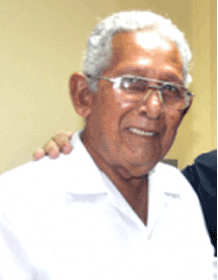(from the Caste War of Yucatan, by Nelson Reed, Stanford University Press, 1964; pgs. 253-255)
Production multiplied, from 45,000 kilograms in 1917 to over one million by 1925, reaching a peak of roughly two million in 1929. During this period, a Cruzob worker could earn more than three hundred pesos a month for the seven-month season; furthermore, he did not live a hard life of exile like the foreign chicleros, but simply worked the trees in his neighborhood in time left over from the cornfield. His had been a moneyless barter society, practically speaking; there were no pockets in his baggy white pants, his people had no tradition of saving, and the money was not long in his hands.
By word of mouth the good news spread, and those ubiquitous merchants to Latin America, the Lebanese and the Chinese, loaded their pack mules and headed into the forest. At first they offered traditional goods, including shotguns, pistols, and ammunition; then luxuries, like whiskey, canned goods, cigarettes, silk shirts, and jewelry; and then novelties of the new age — sewing machines, flashlights, phonographs, anything that would catch the native imagination, at any price. If the flashlights went dead, the records broke, and the sewing machines rusted beyond repair, no matter; there were always more where they came from. It was the millennium. Foreigners were welcome and could travel safely through the jungle.
The Wrigley Company of the United States had done what generations of Ladino soldiers had failed to achieve. After 1929, the peak year of chicle production and wealth in Quintana Roo, a boom year worldwide, came the crash. In 1929 a bale of cured chicle had sold for fifty pesos; in 1930 the buyers offered thirty pesos, and in 1932, seventeen and a half pesos. The Maya were outraged. Not understanding economic theories, but remembering Dzul betrayal, they stopped collecting, so that production was cut in half and then a half again.
Added to this, there was a second, more serious cause for alarm. In August of 1929, fearing hostile Cruzob action and determined to protect the lucrative chicle industry, the Mexican Secretary of War ordered the Thirty-Sixth Federal Battalion to Quintana Roo. It was shipped to Cozumel, where it broke up into small detachments, occupying Cayo Obispo, Santa Cruz, Puerto Morelos, Vigía Chico, Santa María, and Kantunil-Kin. The concessions to General May were ended, his taxing was stopped, and law, order, and graft were to be administered by white politicians and enforced by white soldiers. Cruzob independence was gone forever. In previous years the reaction would have been a bloody one, but even the more defiant now realized their weakness; they expressed their hostility by deposing, but not killing, General May. The more conservative companies withdrew from the central group, which held Guardia at Chancah, to a new site northwest of Santa Cruz called X-Cacal. La Santísima went with these people under the care of the Tatich, Pedro Pascual Barrera, and the military command of Major Eulalio Can and Captain Cituk. There were about seven hundreds of them, and they called themselves “Los Separados,” the Separate Ones, looking down on the other groups as irreligious, aware that only they maintained the complete and the legitimate traditions of the past.
Sóstenes Méndez, originally of Peto, orphaned and captured by the Cruzob as a child, had been a sergeant in the fight against Bravo, and he now continued the tradition of Mestizo leadership by becoming the general of the Chancah majority. Purely Maya in his outlook, he never considered returning to his family now that this was possible, and he shared the common hatred for the white race. But that hatred was much reduced. Constant contact with the Dzul at nearby Santa Cruz and dependence on the chicle market had brought the Maya more or less into the Mexican nation. When young school teachers, eager to carry the message and fruits of the revolution to the most backward members of the Republic, began fanning out from Santa Cruz, they met little resistance from Méndez; and once Vega had been bribed with a pension, he also accepted the schools. Only the separatists at X-Cacal held out.
[email protected]
July 27, 2018
Finca Solana
Corozal Town

